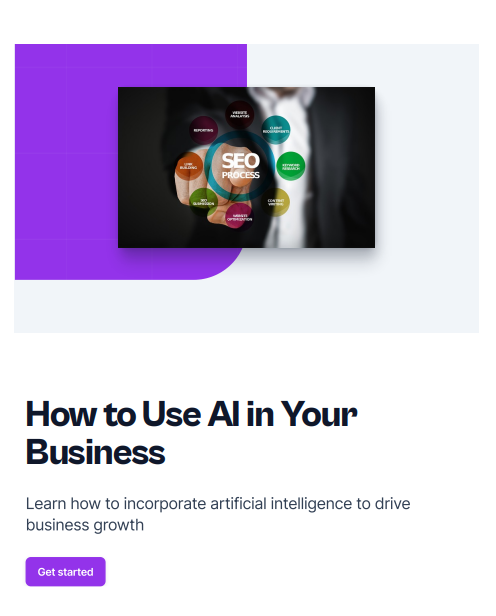Description
How to use AI in your Business
Is artificial intelligence making a smarter or dumber?
How to use AI in your business is crucial these days period it makes a difference between being successful and staying on top of the changing trends or fallen behind.
In the contemporary business landscape, integrating Artificial Intelligence (AI) has become paramount for sustainable growth and competitive advantage.
The initial step involves a comprehensive assessment of your business operations to identify areas ripe for AI implementation. Subsequently, prioritize the integration of AI tools in functions that stand to benefit the most, be it customer service, data analysis, or process automation.
This strategic approach ensures that AI aligns seamlessly with your organizational goals.
Once the target areas are identified, embark on the integration process with a meticulous plan. Begin by selecting suitable AI technologies tailored to your specific needs.
Consider tools that excel in natural language processing (NLP), a facet of AI that enables machines to comprehend and generate human-like language. This is particularly crucial for enhancing communication channels and deciphering customer sentiments.
As the integration progresses, focus on creating a harmonious fusion between AI systems and existing workflows. Transitional steps, such as phased implementation or pilot programs, can help manage any potential disruptions.
These measures also facilitate the adaptation of employees to the new AI-driven processes, ensuring a smooth transition and minimizing resistance.
NLP plays a pivotal role in this integration, enhancing communication between systems and humans. Utilize NLP capabilities to refine customer interactions, automate responses to common queries, and gain deeper insights from unstructured data sources.
This not only improves operational efficiency but also elevates the overall customer experience, a crucial factor in today’s competitive markets.
Continuous learning is key to maximizing the benefits of AI. Implement a robust training regimen for AI models, enabling them to evolve and adapt to changing business dynamics. Regular updates and refinements to algorithms ensure that the AI systems remain aligned with industry trends, fostering agility and resilience.
In addition to operational enhancements, AI empowers businesses with data-driven decision-making capabilities. Leverage AI analytics to extract meaningful insights from vast datasets.
This not only aids in identifying emerging trends but also informs strategic planning. The ability to make informed decisions based on real-time data is a hallmark of a forward-thinking and adaptive organization.





Reviews
There are no reviews yet.